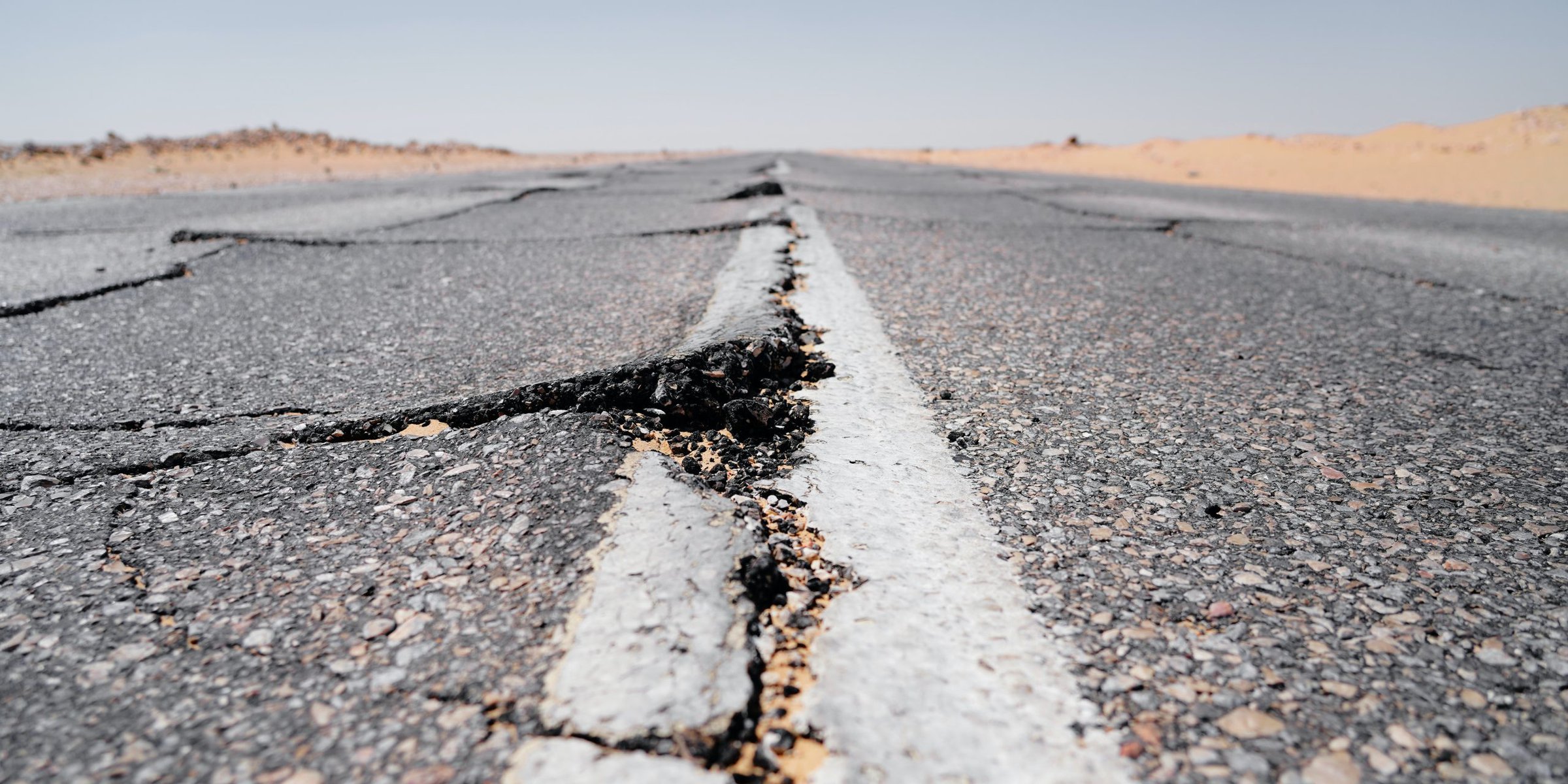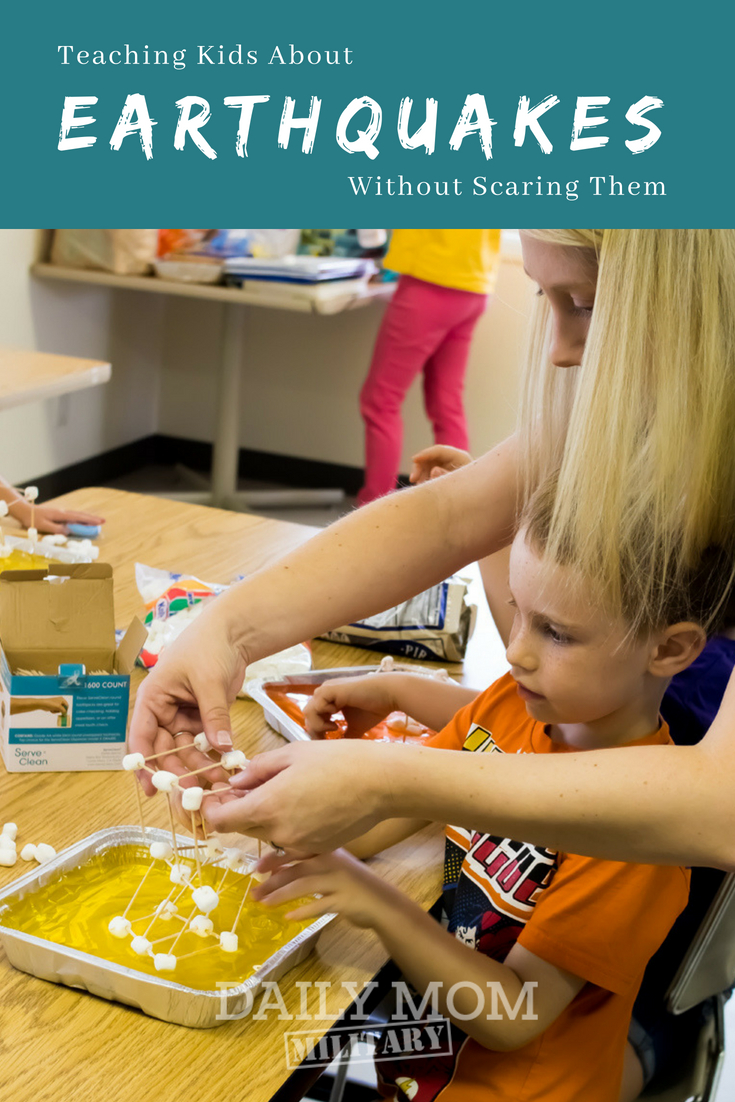The unknown is a dark, scary place for a kid. And, when you think about it, so much of their world is unknown. They begin life sort of blissfully ignorant, then they get just enough snippets of information to scare the living daylights out of them — not sleeping a full night for weeks, then they fill in the details on whatever the subject is. When that happens, they either develop a lifelong fear — or at least a cautionary attitude — or they realize it’s not a big deal, it’s gone and you can look back and laugh on all those nights of sleep you lost trying to explain that crabs can’t, in fact, open doors. Some things, though, like earthquakes, are a little harder to explain because we might not be that well-versed in the details ourselves, especially if they’re new to us too. The military moves us to all kinds of places with all kinds of unknowns, and if where you are or where you’re headed is prone to earthquakes, gently teaching kids about earthquakes is essential for their safety, yours, and the sleep schedules of everyone involved.
Know What You’re Talking About
If we’re being real, earthquakes are scary for adults too. If you’re new to the whole concept of earthquakes, you have a little research ahead of you.
Ready.gov has preparedness information for just about any emergency situation, how to prepare, and how to recover. Start there to fill in your knowledge gaps. You can also sign up for local alerts through your municipality. When you get the gist, map out the best course of action and safe spaces in your home so you can easily explain it all.
Skip the Ultra Scary Stuff
The earthquakes that make the evening news are the catastrophic ones. Don’t start by searching through the videos on YouTube or archived news broadcasts; the horrific images of crumbling cities is only going to intensify fears. Instead, when teaching kids about earthquakes, stick to conversations of preparedness and picture books geared toward young readers that focus on the science of earthquakes.
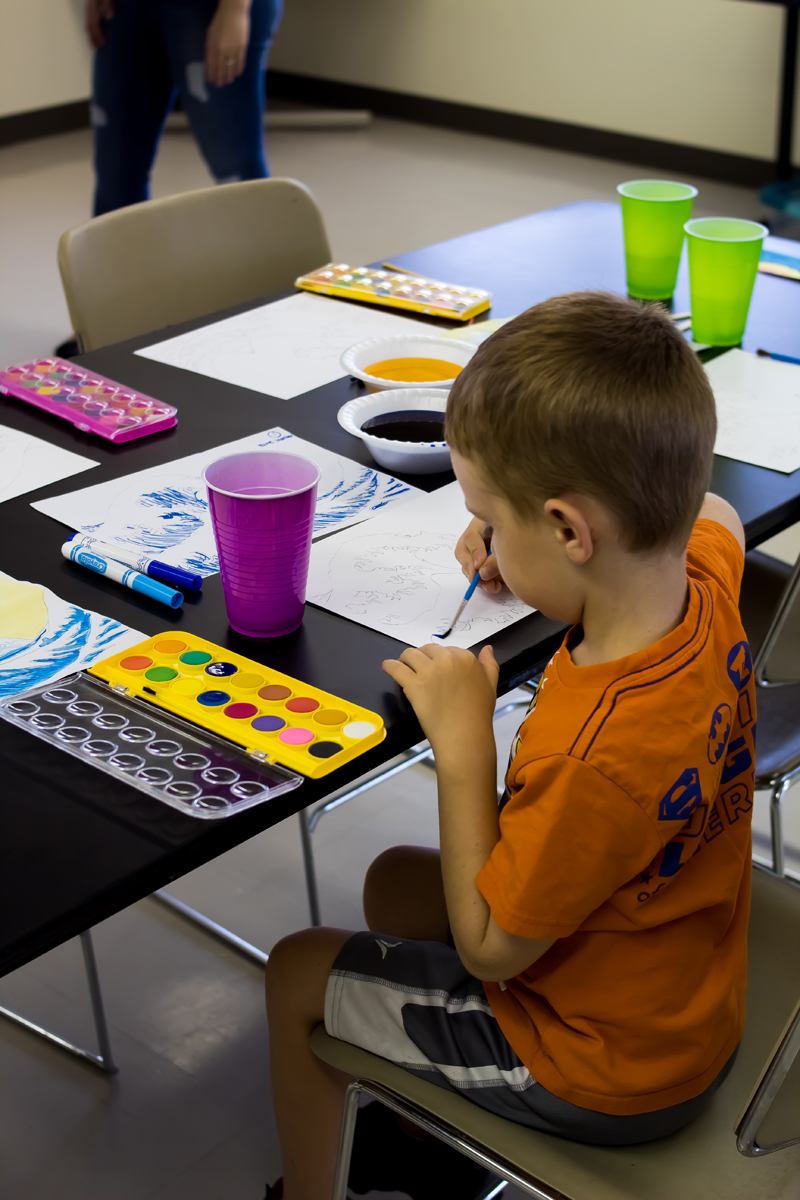
Sidestep the scary stuff when teaching kids about earthquakes; instead, channel your inner creative and pull some art into it, like letting your kids make their own watercolor version of the Great Wave (just print a blank version or a full-color version and let kids trace the outline — that’s two projects in one). Watercolors aren’t scary; they’re fun!
Ease in with Hands-On Science
Pull some science into your art projects. Color rice and let your kids make the layers of the earth. Understanding the why behind earthquakes — plate tectonics will help your budding scientists accept that earthquakes will happen from time to time, but the shifts are usually hardly noticeable.

In addition to the rice layers of the earth, you can make layers of the earth thumbprint necklaces out of colored clay — when your kids wear their necklaces, they have a little reminder that they are earthquake-informed and prepared.
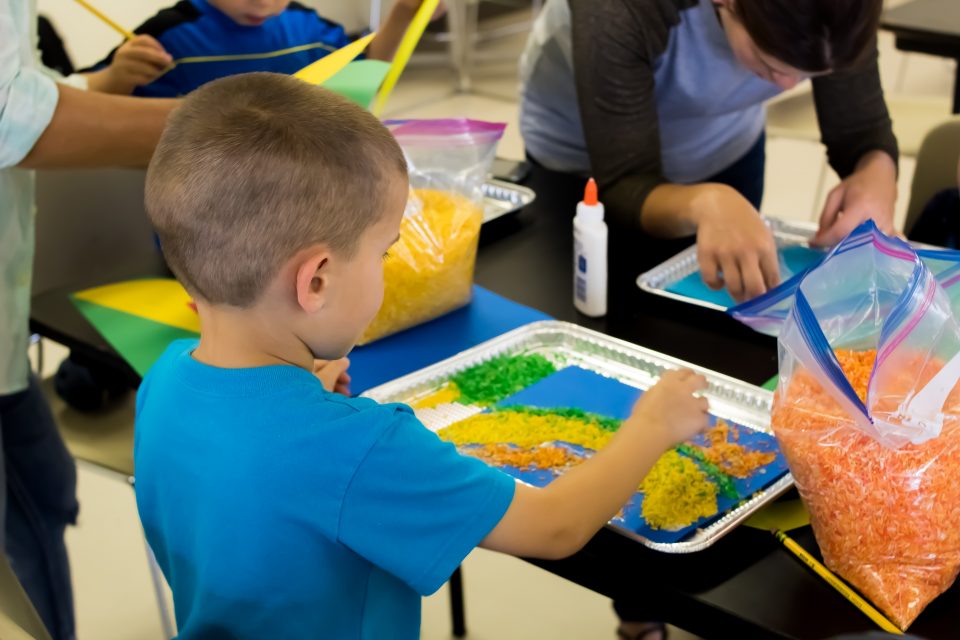
You might also try building marshmallow and toothpick structures over set Jell-O (not to mention, this is a great rainy-day activity). Your little architects can build and rebuild on shaky ground until the Jell-O melts. The goal is to build a structure that can withstand gentle shaking — this can spur conversations about safe structures. Plus it’s a way to incorporate marshmallows into teaching kids about earthquakes — what kid wouldn’t appreciate that?
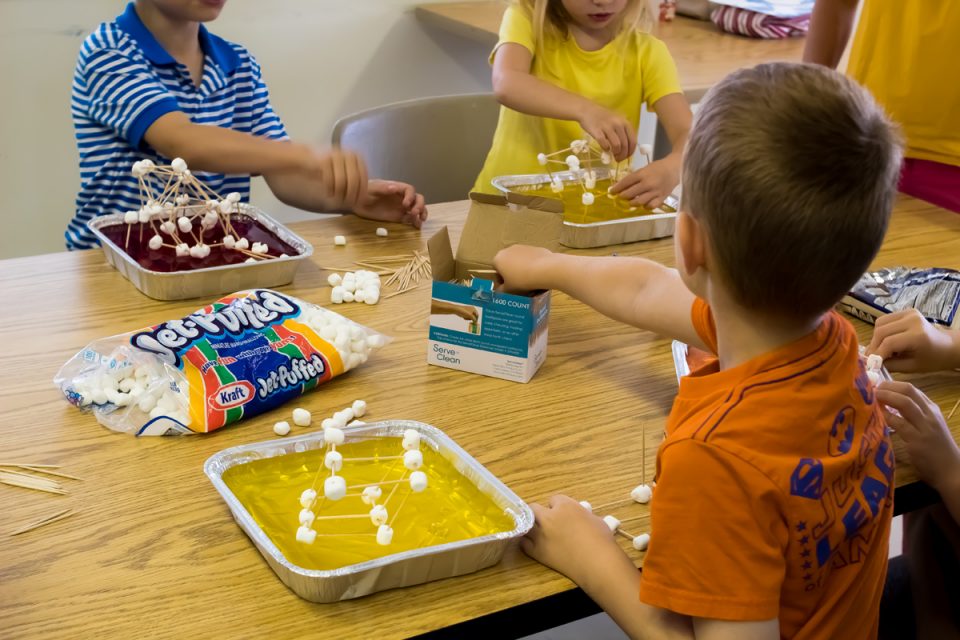
If your kids need a way to burn off that marshmallow-induced sugar rush, try a little game called, It’s Only a Minute. The idea is that, while scary, even the strongest earthquakes are brief — less than a minute (or, more accurately, 30 seconds, but that doesn’t have the same ring to it).
Give your kids some “Minute to Win It” type tasks (like stacking cups, moving candy from plate to plate using just a straw, or trying to keep a balloon in the air) to show them how quickly a minute really passes. Pinterest has a stockpile of these types of games — teaching kids about earthquakes can be a good, old family game night.
Teach Them What to Do
You’ve covered the why, but what are kids supposed to do when the ground starts shaking? There are three steps:
- Drop (to the ground)
- Cover (your head and neck with one arm)
- Hold on (to the table leg or structure that will stay over you)
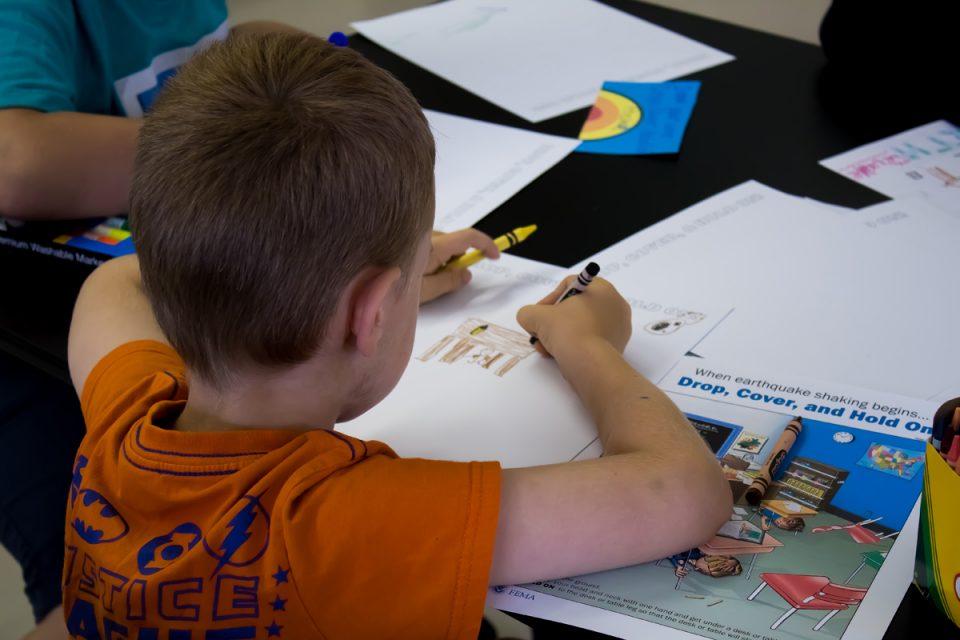
Easy enough, right? FEMA has a printable PDF you can show your kids or even hang in their rooms. Bring that art back into the picture, and let your kids illustrate their own Drop, Cover, and Hold On poster. They can draw what that might look like in their bedroom or in the kitchen. Be sure to talk through the safe spaces together to guide their illustrations.
Practice
Talk is important, but practice needs to be a part of teaching kids about earthquakes. Make it a point to regularly hold your family’s own earthquake drills. Talk about where to take cover in each room, and then try the spaces on for size.
If you’re in an earthquake-prone area, your child should also be having earthquake drills at school. If you aren’t sure, ask!
Aside from just making the action of Drop, Cover, Hold On a natural reaction in a quake, going through the motions regularly takes a little bit of the scary out of the situation. Kids will start to feel more empowered because they are confident. They know exactly what to do.
Build the Kit Together
Like any natural disaster, part of preparedness is having a stash of supplies around just in case. This isn’t always ideal with the minimal closet space in base housing, but it’s worth your time, and the supplies aren’t just specific to earthquakes. Local maps, batteries, a set of clean clothes, water, and an emergency whistle would be handy in any emergency situation. Ready.gov has a pretty thorough kit list, and they even suggest games or things to occupy the kids — ’cause, you know, the Xbox won’t turn on and the iPad won’t charge if the power goes out. Candy Land, anyone? Let your kids be involved in building the kit, and make sure they know where it is.
Talk About Them When They Happen
Earthquakes happen all the time, but most are barely noticeable. When you’re sitting at home and you feel a minor one, talk to your kids about it! “Did you feel that? We just had a little earthquake.” The more you talk about the little ones, the more familiar earthquakes become. And familiar is a whole lot less scary than some abstract idea of an earthquake your kids have pieced together from TV and their own vivid imaginations.
Photo Credits: Southern Ohana Photography


































